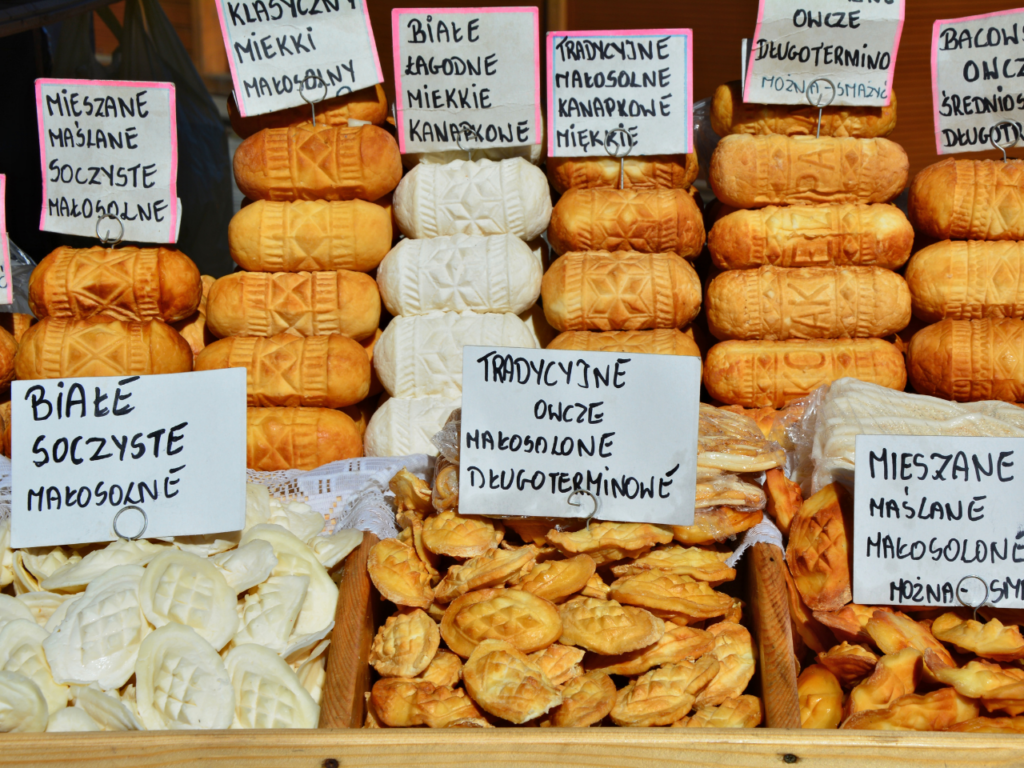When it comes to traditional British foods, British cuisine can get something of a bad rep – words like ‘toad’, ‘bangers’, and savory ‘puddings’ make up a hefty proportion of British dishes. But there’s more to these traditional British dishes than meets the eye. Many of them are steeped in history and, once you get past the unusual names, may be surprisingly delicious to those from across the pond. But don’t let us chew your ear off; time to tuck in to some of the most iconic British foods!
What is England’s national dish?
England doesn’t have just one national dish. The answer will depend on who you ask. Roast dinners are up there, along with bangers and mash, and a classic pie. However, the true battle lies between two national dishes: fish and chips, and chicken tikka masala. The iconic British-Indian curry, allegedly created in Glasgow in the 1970s by Pakistani chef Ali Ahmed, was voted Britain’s most-loved national dish for 23 years in a row, but just this year was dethroned by the humble fish and chips.
Scotch egg
View this post on Instagram
It’s probably best to start by clearing up that a Scotch egg is not Scottish at all; the name comes from its creator, William J. Scott and Sons. It’s made up of hard-boiled eggs wrapped in sausage meat, covered in breadcrumbs and then deep-fried, the perfect pairing with a crisp pint of lager in one of the UK’s many pubs. The humble Scotch egg was the subject of much news in the UK in 2021, when pubs in certain areas of England had to serve a “substantial meal” with drinks – and a Scotch egg fit the requirements!
Toad in the hole
View this post on Instagram
Don’t judge this British staple by its name; as far as we know, a toad has never come anywhere near this dish. The first reference to toad in the hole first appeared in print back in the 17th century, and the hearty dish consists of Yorkshire pudding batter and sausages cooked together in a large tray, before being served with a generous glug of gravy and vegetables on the side.
Pork pie
A staple of English cuisine harking back to Medieval times, the first iteration of a pork pie was recorded in 1390, but it wasn’t until the 18th century that pork pies more similar to contemporary versions started coming into fashion, and they gained in popularity as a handy way of preserving meat. Nowadays, they’re most popular at Christmastime. The outside of a pork pie should be a crisp pastry shell (complete with lid) baked until golden-brown, with a dense, meaty filling made from coarsely ground pork and seasonings, generally tasting savory and peppery.
Fish and chips
View this post on Instagram
The newly-appointed national dish of Britain, fish and chips is best enjoyed either by the sea wrapped in newspaper, or as a takeaway. According to records, the first place to sell fish and chips was opened Bow, East London, in 1860 – now there are around 10,500 fish and chips shops across the UK, affectionately known as ‘chippys’ (though you’ll also find fish and chips on most pub menus too). A fillet of white fish, usually cod or haddock, is battered and fried until golden and crispy, served with chunky chips – no thin-cut fries here. It’s doused in salt and vinegar, with a serving of mushy peas on the side.
Yorkshire pudding
No desserts here – Yorkshire puddings are a savory treat made from a mixture akin to pancake batter. Originally called a ‘batter pudding’ or ‘dripping pudding’, it was then named after Yorkshire in 1747 because puddings from that region are lighter and crispier, first written in print by cookery writer Hannah Glasse. Though traditionally served with roast beef, across many British pubs and households you’ll find Yorkshire puddings with all roasted meats.
Spotted dick
This historical dessert dates back to 1849, when it was first mentioned in ’The Modern Housewife’ cookbook by French chef Alexis Soyer. It’s a moist steamed pudding, made with currants and lemon zest, and served with custard. Don’t be shocked by the name – ‘dick’ or ‘dog’ were words often used as pudding in the 19th century, and ‘spotted’ refers to the currants found dotted throughout the sponge.
Scones
View this post on Instagram
When people think of traditional British foods, afternoon tea is high on the list – and if you’ve ever had that, then you’ll have enjoyed a scone. Relatively plain on their own, made from a simple mixture of flour, butter, and small amounts of milk, egg and sugar, they’re soft in the middle and slightly crisp on the outside. Scones are best enjoyed as part of a cream tea, slathered in clotted cream (a thick cream popular in with South West of England) and strawberry jam. Throughout Britain, scones spark much debate around not only whether you put the jam or the cream on first, but also whether it’s pronounced scone as in ‘cone’, or scone as in ‘con’. You’ll get a different answer wherever you are in the UK!
Roast dinner
View this post on Instagram
Perhaps the most traditional British dish, a roast dinner is what brings everyone together on Sundays. Allegedly, this tradition began during the rule of Henry VII, who ate roast beef every Sunday (he also fed this to his guards, which is where the term ‘beefeaters’ comes from when referring to the guards at the Tower of London). Aside from roast beef, popular options are chicken, pork, and lamb (particularly in the springtime), served with roast potatoes, vegetables, and lots of gravy.
Victoria sponge cake
View this post on Instagram
Victoria sponge is named after Queen Victoria, though the Queen herself was inspired by Anne Russell, the Seventh Duchess of Bedford, who founded afternoon tea as a ritual to fill the time (and hunger) between lunch and high tea (the evening meal) in the 19th century. Queen Victoria was often invited round by Anne to have afternoon tea, and she liked it so much she adopted the tradition herself – along with the rest of the upper classes. Though many sweet treats would have been enjoyed for afternoon tea, it was the plain sponge cake with jam and buttercream filling that was named after Queen Victoria. Modern versions include fresh cream instead of buttercream, and both strawberry and raspberry jam are used.
Full English breakfast
There’s nothing quite like a full English breakfast, packed with fried eggs, bacon, sausages, baked beans, fried tomatoes, mushrooms, and occasionally black pudding, with toast on the side to mop it all up and a cup of tea to wash it down. Despite the name this is certainly not an everyday meal, usually reserved for the weekend. That might beg the question, what do most British people eat for breakfast? Though it’s not a fry-up every day, most people will have a piece of toast, cereal, or granola on weekday morning before work.
Pie and mash
View this post on Instagram
A true British comfort food, a classic pie dates back over 100 years, originating in the docks in London and eaten by the working classes in the Victorian era. Shortcrust pastry encases a filling of meat (usually beef or chicken in modern day), and served with mashed potato, made with lots of butter and seasoned well. Instead of gravy like you would have with a roast, pies were served with ‘liqour’, a kind of green parsley gravy. However, originally the pies would often have been filled with eels, as they were especially prevalent in the River Thames.
Chip butty
One of the most simple British foods, the humble chip butty is basically a chip sandwich, best served in soft white bread with lots of butter and salt – no sourdough here. These are the perfect hearty snack at the pub alongside a pint of lager or ale. Butty is a Northern England slang word for ‘sandwich’ (also sarnie) from the 1800’s, the word butt (taken from butter) and adding a ‘y’ and/or a shortened version of bread and butter.
Eton mess
View this post on Instagram
As the story goes, Eton Mess was first ‘discovered’ during an Eton v Harrow cricket match in the late 19th century. A large pavlova (a strawberry, meringue and cream pudding) was dropped, and instead of wasting the food, the smashed-up dessert was scooped up and served as a mess in individual bowls. The first written mention of Eton Mess was in 1893, and the dessert has clearly stood the test of time, remaining a seasonal summer staple across Britain.
Crumpets
A breakfast and teatime treat, crumpets are small and circular, characterized by lots of small holes in their surface – perfect for absorbing copious amounts of butter. Crumpets originated in the 17th century (though the earliest reference to crumpets dates back to 1365) as thin pancakes made from a flour, milk, and egg base. Though they would have originally been fried in a pan, nowadays they’re heated for a few minutes in the toaster and are much thicker, with a slightly spongey texture.
Shepherd’s pie
View this post on Instagram
The ultimate winter warmer, shepherd’s pie is filled with minced lamb, onions, and carrots, and topped with mashed potato – not pastry. It’s baked in the oven until the top layer is golden and slightly crisp, generally served with peas. You may have also heard of cottage pie, which is exactly the same except the filling uses beef, not lamb.
English muffin
Despite their name (and place on this list of British foods), English muffins were actually first created in New York City – albeit by an Englishman. Samuel Bath Thomas emigrated from Plymouth, England, to New York and 1874, and started making (and selling) thinner, pre-cut crumpets while he worked in a bakery. These eventually evolved into a modern day English muffin, and only made their way over to the UK when the U.S. began exporting them in the 1990s. Now, unlike a crumpet, they’re more bread-like and look like a small bun, made with flour and yeast, often used as the base for a breakfast muffin, filled with bacon, eggs, or sausages.
Crumble
View this post on Instagram
Simple but sweet and comforting, crumble is made from a cooked fruit base (traditionally apple, but other variations include rhubarb, pear, and blackberries) mixed with cinnamon and sugar, topped with a mixture of flour, butter, and sugar that’s kneaded until it becomes ‘crumbly’. It’ s then baked until golden brown, before being served with a generous pour of custard (or cream) over the top. This is the perfect dessert to enjoy after a roast dinner.
Bubble and squeak
The perfect leftover meal after a roast dinner, bubble and squeak is named after the sound it makes when cooked. Fried potatoes and cabbage are always involved, and occasionally meat like bacon will be added. Not only is it a particularly thrifty meal, but it can be eaten at any time of day.
Sticky toffee pudding
View this post on Instagram
As British foods go, sticky toffee pudding is a guilty pleasure. Attempting to trace its is an arduous task, though it appears to have been a more recent addition to British menus than first thought; in 2012, British author Tess Baxter claims that Sharrow Bay Hotel in the Cumbria region introduced the pudding in the 1970s. While that is hard to prove, what’s easy to assert is how beloved this sweet treat is. A decadent blend of moist sponge cake and chopped dates, doused in a thick toffee sauce makes the perfect end to a pub dinner – served with custard or ice cream, of course.







